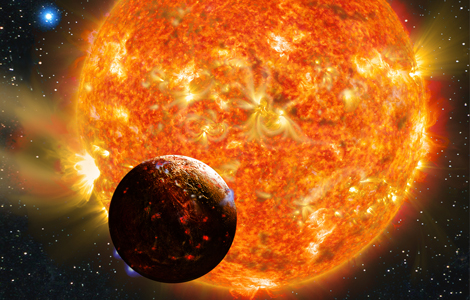Astronomers Find an Earth-Size Lava World
Kepler 78-b is our closest twin yet—except for the hellish temperatures
Scientists following up on data from the Kepler planet-hunting telescope have identified Earth’s closest twin yet—at least in terms of size and mass. Measuring only 1.2 times the radius of Earth, Kepler -78b is now the smallest planet for which we also know the mass: about 1.7 times Earth’s. The two planets have roughly the same density, which means Kepler-78b is probably made of rock and iron too.
That’s pretty much where the similarity ends, though. Kepler-78b orbits perilously close to its host star—so close, in fact, that its year lasts only 8.5 hours, and surface temperatures are several thousand degrees on the side facing the star. No water, no life, and no good explanation—at least not yet—for how such a small planet ended up so close to its star. According to current theory, the star would have been two to three times bigger than it is today when the planet formed. But if -78b started off in its current location, “the planet’s orbit would be inside the star itself,” which is clearly not possible, says Dimitar Sasselov of the Harvard-Smithsonian Center for Astrophysics in Boston, speaking at a press conference today. One possible explanation is that the planet is the dead core of a gas giant planet that migrated inward from farther away, but that theory is problematic too, says Sasselov. He called -78b “a poster child for a totally new class of planets” that has recently emerged from the Kepler data.
The discovery sets a new standard for observing small, rocky worlds. Kepler found the planet and measured its radius last spring, but it wasn’t until the summer that two independent groups—one working with the HIRES spectrograph at the Keck Telescope in Hawaii and the other with the HARPS-N spectrograph at Italy’s Telescopio Nazionale Galileo in the Canary Islands—were able to make the exquisitely sensitive measurements that allowed them to calculate the mass of Kepler-78b, based on the spectral signature of the tiny planet tugging on the much bigger star.
The two teams reported their results in Nature magazine today.
